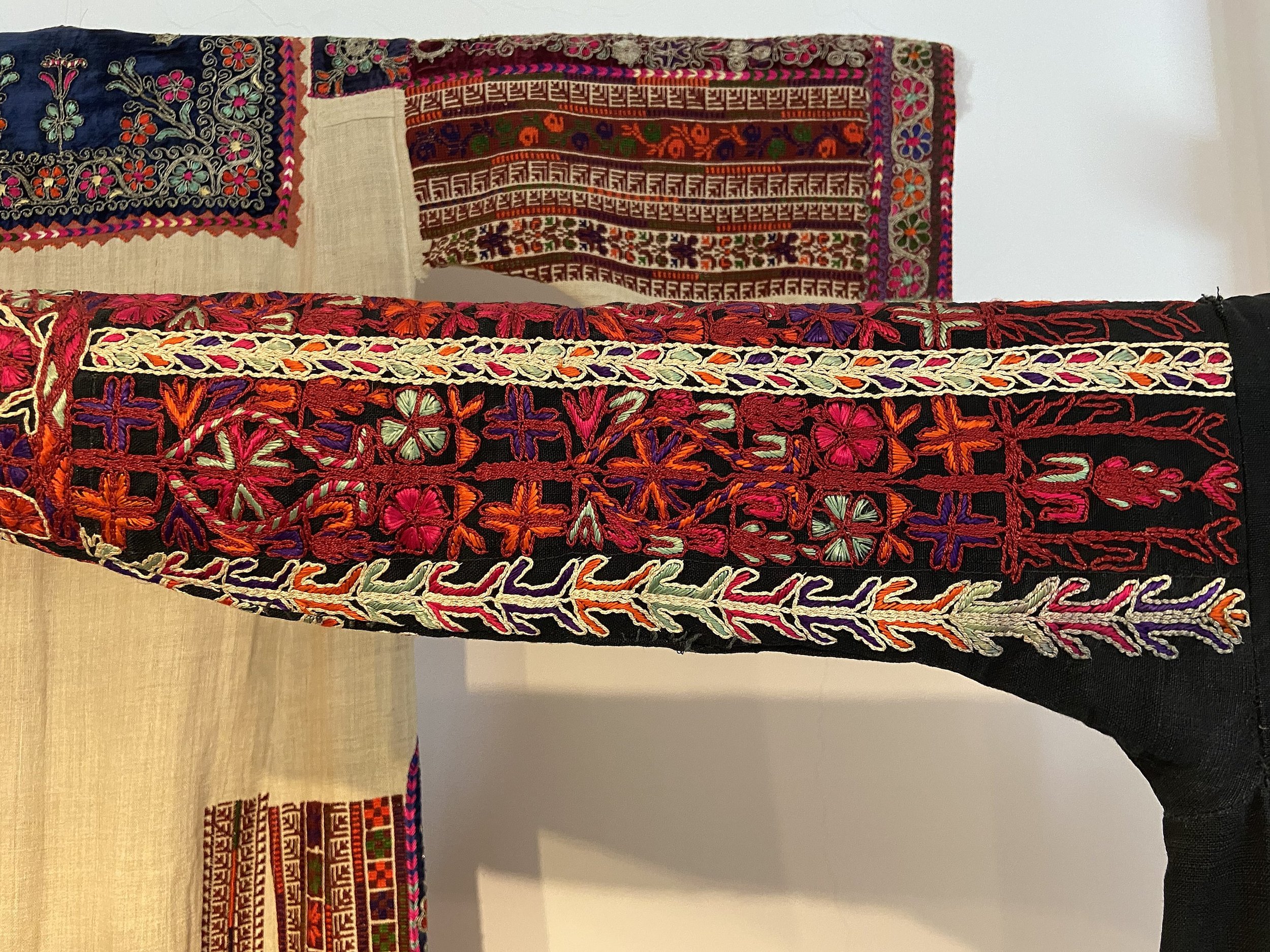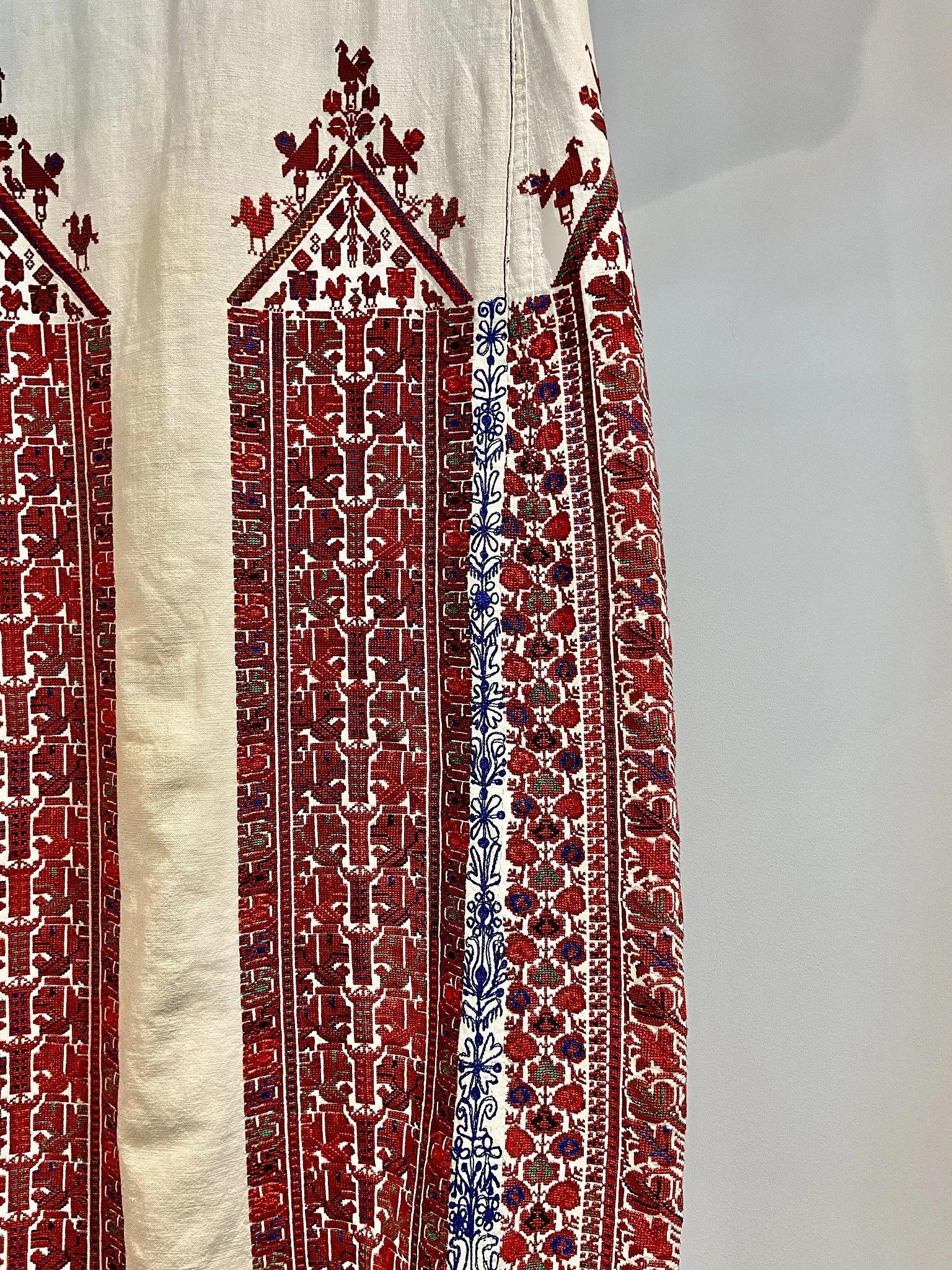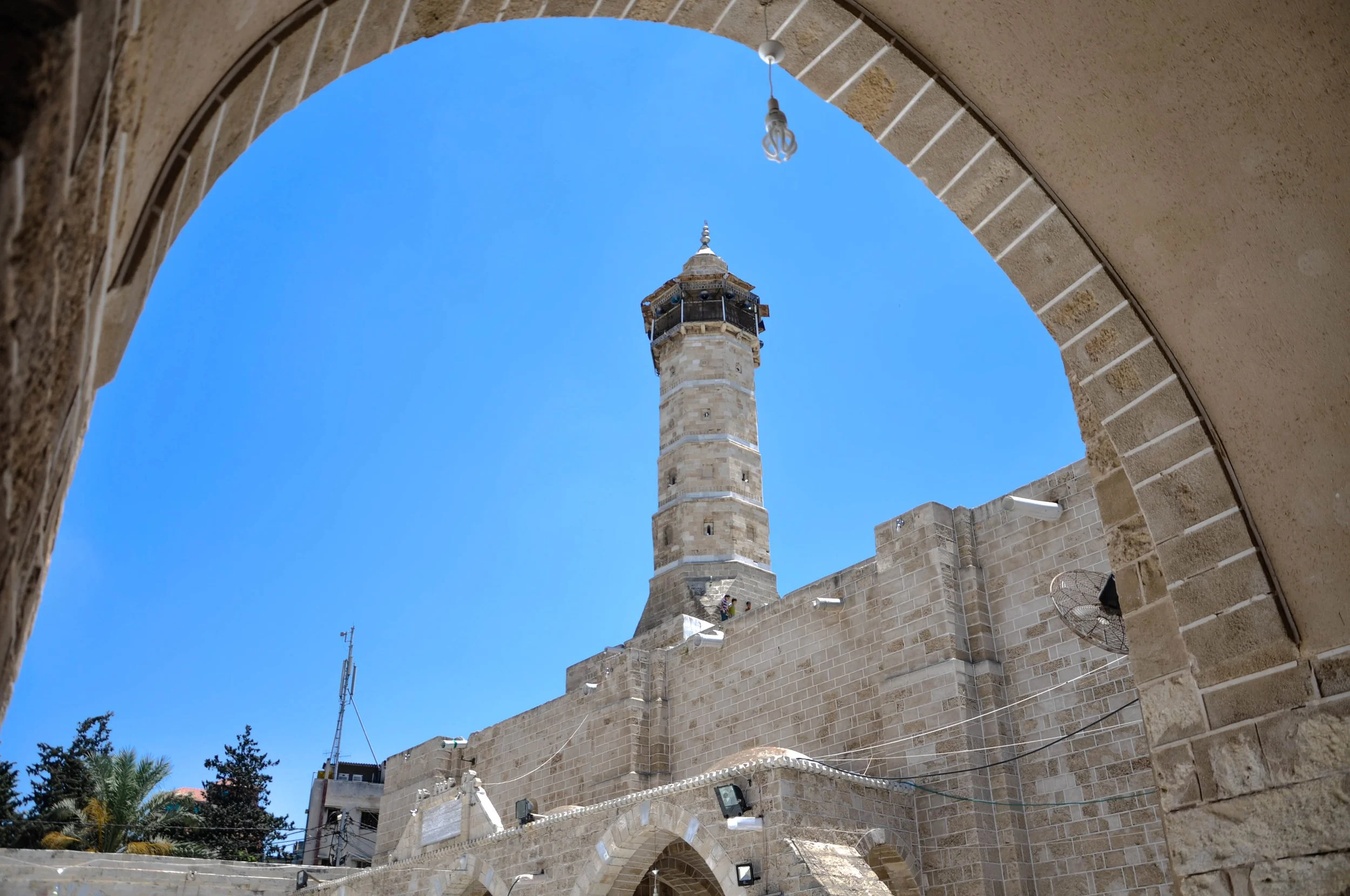The Destruction of Palestinian Heritage: a Cultural Genocide
Embroidered Thobe // Photo Courtesy: Wikimedia Commons
With a practised hand, a woman in Palestine stitches her history into her thobe, a dress her ancestors had worn in times of prosperity, and which she will now wear as a sign of resilience.
Tatreez, the Palestinian tradition of embroidery, has been documenting their lives for centuries, interweaving within its patterns a unique kind of geographic signalling. The motifs on a woman's thobe are an homage to her village of origin, the colours and symbols narrating the reality of her present, but also of a history which has been lost. She recreates the patterns of her heritage, remembering the past in proclamation of her own future and the future of Palestine.
Embroidered Thobe // Photo Courtesy: Wikimedia Commons
The Palestinian Museum in Birzeit preserves a collection of these traditional dresses, their exhibitions illustrating how the practice of tratreez and the thobe have evolved over time. With some of the dresses dating back more than a century, they profoundly refute the zionist claim that Palestine was 'A land without a people…', free to give to a '... people without a land'.
In the modern day, while Palestinian women still don the thobe as a symbol of national pride, the designs have become increasingly homogenised. Since the 1948 Nakba, the mass displacement of Palestinian people has made the preservation of the practice impossible. The cities and villages that had inspired the designs now sat miles away, behind new borders and new names. This marked the establishment of the new State of Israel, and with this, the expulsion of at least 750,000 Palestinians from their historic homeland. The mission has been clear from the beginning: to strip away the native population's culture and history in order to erase their national identity. To ‘remove the Arabic names for reasons of state. Just as we do not recognize the Arabs’ political proprietorship of the land, so also do we not recognize their spiritual proprietorship and their names’ wrote Israel's first prime minister, David Ben-Gurion.
The destruction of Palestinian cultural heritage has always been a characteristic of Israel's genocide, and the last six months have only served as categorical evidence to this fact. It is impossible to accept the devastation of Gaza's historical landscape as collateral damage, to see a strategy of self-defence behind the indiscriminate bombing. The mounting international pressure for an immediate ceasefire may bring a temporary respite to the conflict, but ahead lies the impossibility of reconciling with the thousands of lives lost and history destroyed.
'The war on culture has always been at the heart of the aggressors’ war on our people', wrote Dr. Atef Abu Saif, the Palestinian Minister of Culture in a report outlining the extent of damage to the cultural sector in 2023. Months later, a joint press release by the Palestinian Central Bureau of Statistics and the Ministry of Culture had counted damage to 216 historical sites, museums, and archaeological sites alone. UNESCO has now verified 43 of these sites.
Omari Mosque // Photo Courtesy: Wikimedia Commons
Of the religious sites destroyed, the Great Omari Mosque has been reduced to rubble after Israeli bombardments in December. The mediaeval mosque had stood as a monument for Palestinian history in the region and a gathering point during Ramadan among other religious rituals. According to legend, the mosque was constructed on the ruins of an ancient Philistine temple, built originally as a Roman Cathedral around 406 AD. Each conquest of the city saw the site's transformation: remodelled as a mosque during the Muslim conquest of the land (~700 AD), then back into a church during the crusades (11th century), and finally back into a mosque with the reign of Ayyubid Sultan Saladin (12th century). The Great Omari Mosque has stood testament to the diversity of Palestine's historic and cultural landscape, and now lies desecrated with only the minaret standing above the ruins.
In their case against Israel to the ICJ, South Africa stated that the destruction threatens 'to make the continuation of Palestinian life in Gaza impossible'. Despite acceding to the 1954 Hague Convention, which stipulates that cultural property should be protected (regardless of its origin) during times of armed conflict, the IDF continues to deliberately target sites of cultural significance in Gaza.
By destroying significant monuments of Palestinian history, Israel has eradicated the right of future generations to their cultural inheritance. As South Africa's case carries on to explain, Israel has intentionally sought to destroy 'Gaza’s future academic and cultural potential' by decimating educational institutions and cultural centres, stifling their ability to rebuild after the disaster.
The world watches as Israel actively seeks to erase all records of Palestinian existence in the region, as the state carries out their 75 year old ethnic cleansing. The cultural genocide continues, and for generations to come, the grief of this devastating loss will eternally embed itself into the Palestinian national consciousness.
If you want to support student activism and find out more about how our institutions remain complicit in the genocide, follow @uclactionforpalestine on Instagram.



